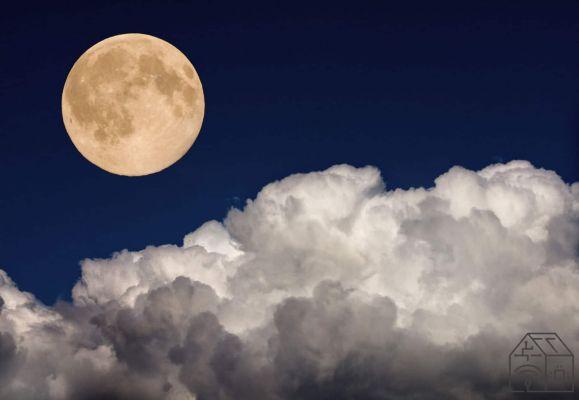
Saturday 24 July from around 22 pm we will have the opportunity to photograph the Deer Moon; it's called that because in this month the deer stop growing their antlers, with the horns at their maximum size. It is also sometimes called the Thunder Moon due to summer storms.
We are just in time to prepare to photograph the Moon, let's see how to organize ourselves.
Location for the Luna del Cervo
For the shots of the moon, the location is really important. It is true that our satellite always remains in the sky but for an effective composition it is better to search a place that is well suited to recovery. In fact, a first important tip is that of take advantage of the first moments of the lunar dawn for images. If the Moon, when it appears, aligns itself with something in the landscape, we will have gods much more interesting shots than her alone in the sky.
The location is therefore important and must be sought with care. It is a different search than usual because we will have to find something that surrounds the Moon and that it is somehow interesting. Anything can be fine, without necessarily going to exotic places. It is a small training of the gaze that allows us to understand how the landscape can act as a frame.
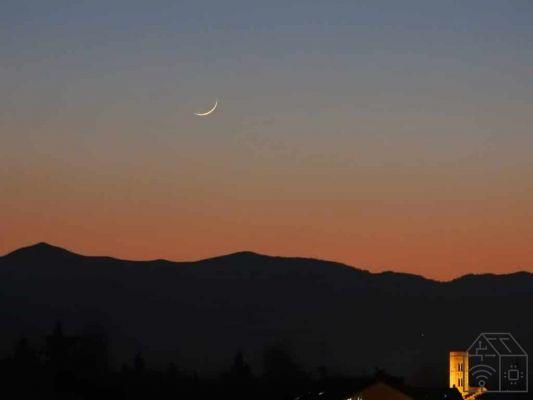
Equipment
It is a delicate part because we are mainly related to the focal length. It is necessary to play hard otherwise we will see very little of the Moon.
The focal length must be 450mm or more, equivalent in 35mm Full Frame format. For example an all-rounder zoom like the future Tamron 18-300mm can be fine, we talked about it here; once mounted on APS-C it becomes a 27-450mm. It will then be the resolution of the camera to help us with some strategic crop. It is a time of revenge for owners of APS-C cameras and 55-250 class zoom.
Le Super Zoom compacts are a very interesting choice and sometimes the best: in a small body we have Olympic focal lengths. Some images on this page are from a Nikon P900, it boasts an optical zoom equivalent to 2000mm, the perfect length to fill the frame with the Moon.
Settings
To photograph the Deer Moon we use some attention; starting from sensitivity we suggest a low one as the Moon, compared to the stars, is extremely bright. Usually the ISO 100-200 range is ideal.
For shutter apertures we suggest the full opening or some value slightly more closed to avoid defects at the edges of the lenses.
Trendy shutter speeds are very fast, around 1/125 of a second. If you can work manually it's better, you get to the right exposure quite quickly. If you don't have access to the manual controls try to change the exposure of - 2 or -3 stops compared to what the meter suggests camera, just look for the +/- function in the menus.
Low ISO, fast shutter speeds and large apertures
A tripod is strongly recommended or rest the camera on something solid and adjustable. Even if the times are fast enough they are not to compensate for the blur of a long focal length. Once again the compact Super Zooms have an edge because they are often stabilized efficiently, thanks to the light and small lenses of their optics.
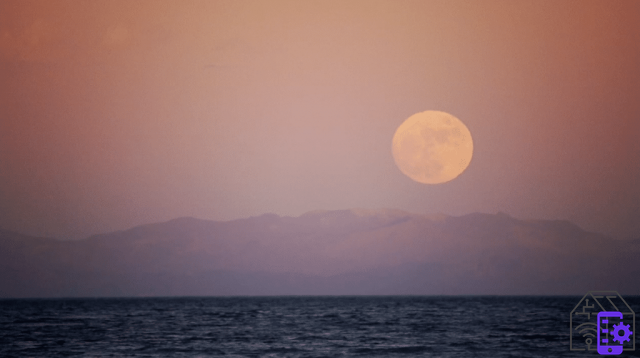
for focus we must be careful, it could give us problems. If we are using a manual focus lens we may be tempted to move the ring all the way to infinity: don't do it. The end stroke, for various technical reasons, is a little earlier. Try to focus on a mountain that detaches from the bottom using the AF system of the camera, it will be enough to find the right point of focus at infinity.
On compacts, Super Zoom or not, focusing is more critical. If the light is low it is practically impossible, you have to familiarize yourself with the menus and see if the infinity setting is foreseen, so that the camera focuses on the correct point.
Luna del Cervo and Smartphone: yes but not for photos
The smartphone isn't quite the best tool for Moon photos, although things are getting better every year. It remains a very convenient tool for two reasons.
Remote shooting: by connecting our camera to the management App we will be able to shoot the Moon without touching the camera body. In this way we will avoid the blur.
App to find the Moon: as we said the most magical moment for the Moon is when it rises, only how do you understand in which precise direction? There are several Apps that help us thanks to Augmented Reality. One of these, among many, is Sun Surveyor, available for both iOS and Android. Just frame with the camera and the App will show an over impression of the Moon's path and its position.
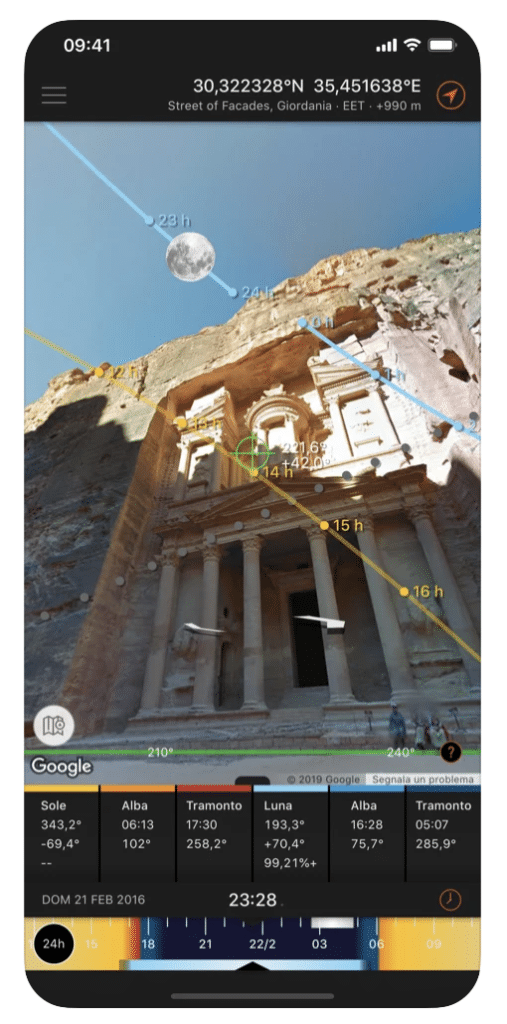
Deer Moon: Time Lapse or Video?
In addition to photos we can also make videos or Time Lapses. The Deer Moon, if taken with a long focal length, it will remain for a short time in our shot, so a video of a few minutes will suffice; when posting it is a matter of a few clicks to make it faster.
If, on the other hand, we use shorter lenses, we can opt for a Time Lapse with a shooting range between 5 and 15 seconds.
Ready to resume
Before leaving we suggest that you have these things with you, they will be useful:
- charged batteries
- tripod
- remote shutter release (remote control or cellphone)
- anti mosquitoes
The indications of the various astronomy sites indicate that the Moon will rise at 21:55 with azimuth 122 ° (East-Southeast). Translated into simpler terms it means that just before 22pm on Saturday 24 July the Deer Moon will rise on the horizon, so if you are at the sea you will see it immediately. If you are in the mountains, on the other hand, you will have to calculate later because you will most likely have mountains around, use a dedicated App to understand precisely when.
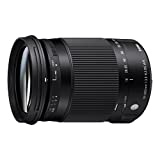 Sigma Lens 18-300mm-F / 3.5-6.3 AF DC Macro OS HSM (C), ...
Sigma Lens 18-300mm-F / 3.5-6.3 AF DC Macro OS HSM (C), ...
- Small and lightweight design
- 4 times, 1 SLD and 3 aspherical lenses ensure excellent image quality
- improved optical stabilization system


























